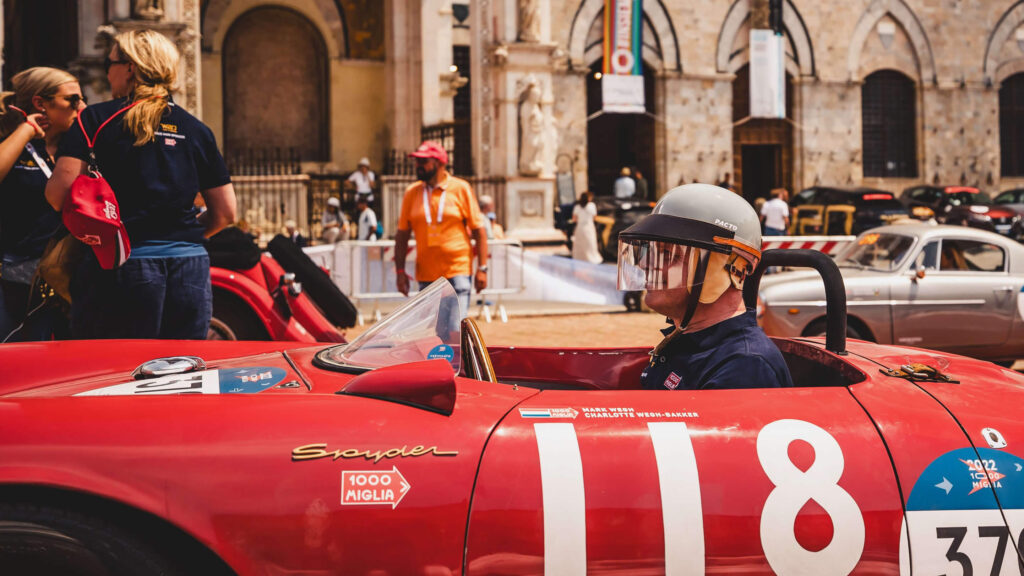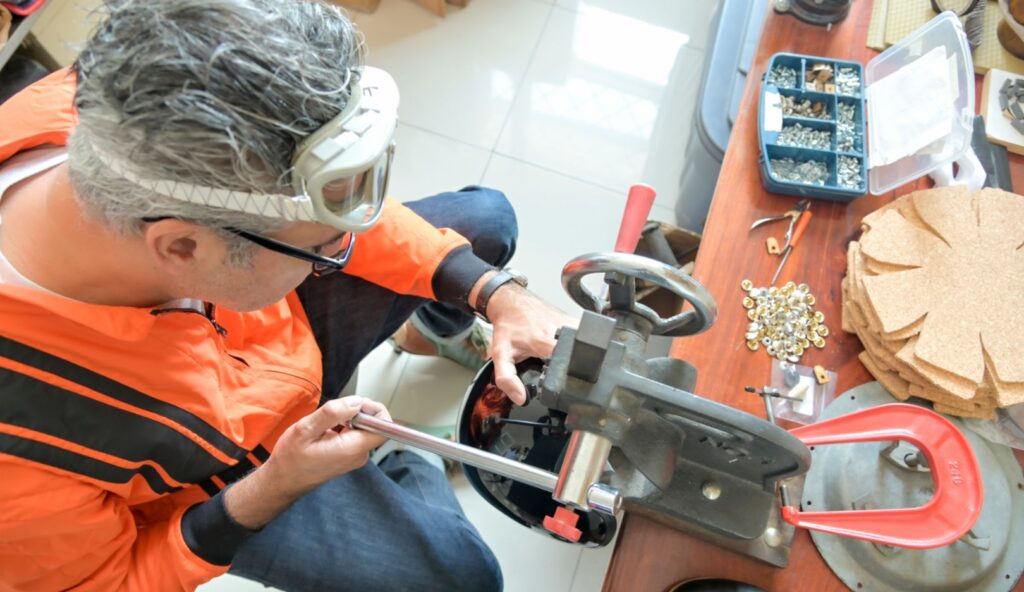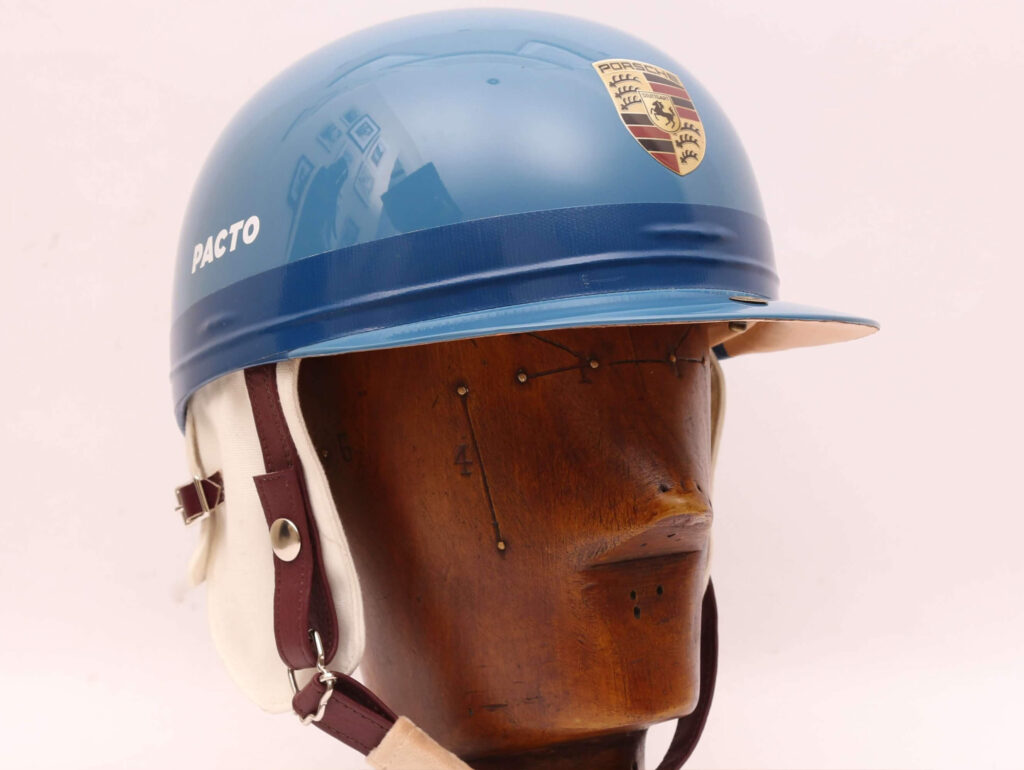Article published in the official Porsche magazine Christophorus
Without meaning to, the Costa Rican Danilo Coto Cruz has become one of the most recognized manufacturers of vintage helmets in the world.

Photo: private archive
From a very young age, history fascinated this 52-year-old man born in Cartago. His father, Javier, told him that in 1948 the “Pacto de Ochomogo” was signed in his hometown, which put an end to the national Civil War. Very close to that place, the only helmet factory that has ever existed in Central America was founded during the 1960s.
“Roberto Fusina was an Italian who had a license to make helmets for the Italian brand AGV,” said Coto, who, due to his taste for history, fueled that love of classic motorcycles from very early on. He devoured any magazine or book that dealt with the history of motorcycles.
At age 19, he began restoring motorcycles that he used for transportation to go to the “Tecnológico de Costa Rica”, where he studied agricultural engineering. On his round trips, his head was transported to motorcycle races on the Isle of Man, in the Targa Florio, or in the German Grand Prix.
A few years later he moved to San José, where he studied civil engineering and married his eternal girlfriend and partner in two-wheeled adventures, Marianella Marín.
Coto quickly joined motorcycle lovers in the country’s capital and at the beginning of this century, he was named president of the Club de Motos Antiguas de Costa Rica. Also, by then he already owned a Zundapp KS601 Sport, a very special German motorcycle of which less than 400 units were manufactured.
‟I bought it in 1999 from the sculptor Carlos Zúñiga, its first owner, but he didn’t want to sell me the old helmet that hung in his garage. It was the first old helmet I had seen in my life and I fell in love immediately. It’s that a helmet represents adrenaline, danger, it ends up being a part of your body because you trust it.”
In 2001 he bought a Konsul 500 c.c. from NSU and soon after the NSU Konsul Club invited him to the Germany Rally, which passed through Neckarsulm. There he wanted to buy a German helmet, but seeing the passion in his voice and the sparkle in his eyes, the owner of the antique shop gave him away. ‟A Romer who became an object of desire for me. He would contemplate it and put it next to me while reading the book ‘The Motorcycle Helmet’, a work of art that tells the entire evolution of helmets from the 1930s to the 1990s.

So he turned to the factory of the Italian Fusina, but back then they were dedicated only to chaste American designs. ‟I had no choice but to make my own helmet.”
In his head he kept dreaming of an English helmet, so he contacted the person who has sold the most helmets in Europe in the last 30 years, Nigel Stark, but he didn’t have the model with which Coto kept awake.
The rigid cover was made of fiberglass and then he used his knowledge in handling PVC to replace the rubber that covered the edges. “It was not an easy task. It took three years for the whole process and I was so happy that I took a picture of it and uploaded it to my Facebook account,” he said.
Soon after, he received a message from England ordering a hundred helmets and offering to pay for them in advance. ‟I didn’t know who the buyer was and instead of immediately accepting the order I told my wife that we should go to London to meet him”.
Upon arriving at the appointment, he discovered that it was Derek Harris, owner of the oldest motorcycle accessories company in the world, Aviakit – Lewis Leathers, the same company where Steve McQueen bought all his clothing for the 1964 International Six Days Trial, an enduro motorcycling competition held in eastern Germany.
‟I told Harris that this was actually the only helmet I had ever made and I didn’t know if I could make a hundred,” Coto said. ‟He, who is a gentleman with enormous respect for English tradition and artisan manufacturing process rather than mass production, told me that he was in no hurry, to send them to him when I could”. That same day the collaboration pact was sealed.
As soon as he returned to Costa Rica, he began making the helmets and packaging boxes at his house, at night, after coming home from the office. ‟The Helmets in the 1958 ‘Jet helmet’ design, sold under the name Aviakit were so well received in England and Japan, that he later ordered another hundred from me.”

Little by little, collectors began to find out that Coto was the one who made the helmets and they began to make private commissions.
Two years later he received a letter from Bill Vero, the son of the founder of Everoak, the company that presented the first Formula 1 helmet in 1949. The man, who is around 80 years old, congratulated him on the work he was doing and invited him to have lunch at his house in London. It was the opportunity to meet the most influential person in the world in the manufacture of helmets for Formula 1.
In the middle of the lunch, Vero asked him: ‟What do you think about when you make a helmet”. Coto did not hesitate in his response: ‟I think that I am in 1950 and that I am an employee of his company. And I have to make a perfect helmet because it is going to be bought by a very important person who is going to use it to compete. This is not a touring helmet.”
With that sentence, a new agreement was sealed to provide Everoak with some parts for its helmets that could no longer be produced in the factory due to the death of older employees. ‟A real honor for me,” said Coto. “A dream come true”.
The fame of the artisan Coto continued to grow to such an extent that in 2016 he received a call from James Mangold, the director of Ford vs. Ferrari, to make him some helmets, visors, shoes, gloves, and clothing for the film. Then came other volume orders from the Japanese company DBMS, owned by Kei Takeushi, the world’s largest collector of British helmets. And later came more special commissions such as a direct collaboration with Goodwood, where Coto had the opportunity to meet the Duke of Richmond, Lord March, the owner of the estate where the Festival of Speed and Revival has been held since the 1990s.

Private commissions have also led him to provide helmets for clients who race different classic Porsche models in such traditional competitions as the Italian Mille Miglia and Coppa Ugo Barone, the Belgian The Zoute Rally, and the Swiss Bernina Grand Turismo. In Mexico, he has been present at the Quail Rally and the Rally Maya. Dereck Hill, the son of the two-time Formula 1 world champion, also ordered him a helmet to race at Goodwood with his father’s car.
The works that most honor Coto are those he does for Everoak since it is the company that for 350 years has made helmets for English soldiers, kepis for royalty, and helmets for cars and motorcycles.
And while the long-lived Everoak begins to have that bluish glow of fading stars, Coto’s artisan workshop glows with the orange intensity of young stars. Pacto, founded in 2012, not only flourishes but honors history and the place where José Figueres Ferrer, from the National Liberation Army, and Manuel Mora, from the Communist Party, signed the “Pacto de Ochomogo”, very close to the helmet factory from the Italian Fusina.
Information about the article
Original piece published in issue number 405 of Christophorus, the Porsche customer magazine.
Copyright: Images and sound published herein are copyrighted by Dr. Ing. h.c. F. Porsche AG, Germany, or other persons. Reproduction in whole or in part without the written permission of Dr. Ing. h.c. is prohibited. F. Porsche AG. Please contact newsroom@porsche.com for more information.
Author: Carlos Alberto Múnera
christophorus@porsche.de



